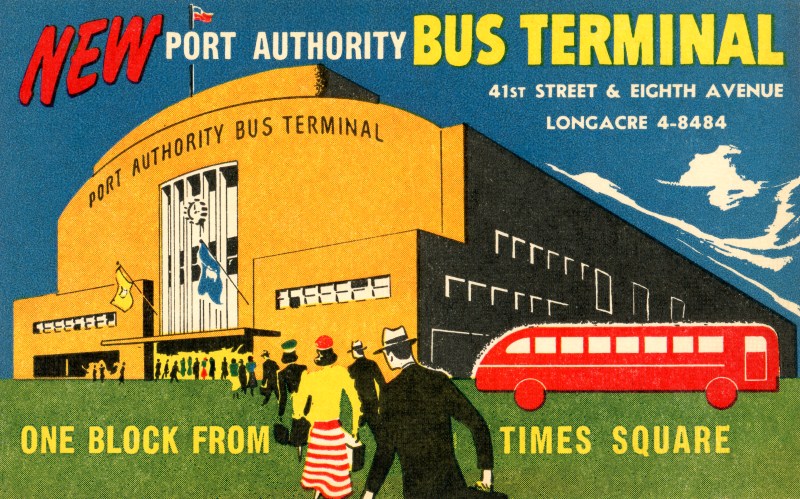Public transit subsidies are always a rather thorny issue when it comes to politics. There’s a compelling argument to be made that public transit should be subsidized to some degree or other as it allows people who can’t afford to live in downtown/center city areas relatively cheap access to job and cultural centers as well as other social services. There’s also an argument to be made that transit users should cover the operations and capital costs of the system, but until the nation’s drivers start footing all the bills for road maintenance and expansion, I have a tougher time buying into that argument.
In New York city, after years of divestment by state and city officials, riders carry most of the burden of their subway system. New York City Transit still enjoys the benefits of the MTA, but subway riders foot around two-thirds of the cost of a subway ride these days. Based on recent studies, in fact, the per-passenger subsidy is around $1. As far as American transit systems go, that’s a tiny subsidy, and we need look no further than our own city to find a transit network that seems to bleed money.
As Business Week explored recently, the Port Authority’s PATH system is woefully inefficient. PATH, noted the magazine, is more expensive than any comparable system and shouldn’t even be compared to Transit’s subway network. According to recent studies, the per-passenger cost of a PATH ride to Port Authority is $8.45, and the average fare of just under $2 doesn’t even cover a quarter of these costs. The New York City subway on the other hand relies on subsidies of around $1.11.
Business Week tried to explore why these cost discrepancies are so pronounced. As Port Authority auditors and watchdogs grow increasingly wary of the unruly agency, the money PATH is bleeding is coming under increased scrutiny. Martin Z. Braun reports:
The agency faces challenges across its portfolio of operations. Spending on policing has doubled since the Sept. 11, 2001, terrorist attacks and now consumes almost a quarter of the agency’s operating budget, Bloomberg News reported in June. Last year, its marine terminals lost 2 percentage points of market share. PATH has been a financial millstone around the Port Authority’s neck since it took over the bankrupt Hudson & Manhattan railroad in a 1962 trade between New Jersey Governor Richard Hughes and New York Governor Nelson Rockefeller. In exchange for getting the Port Authority to take over the H&M Hudson Tubes, as the rail line was known at the time, Hughes allowed Rockefeller to use the Port Authority to develop the World Trade Center in lower Manhattan…
While public officials and transportation analysts have pointed to the railroad’s low fares and its lack of state and federal aid to explain its strained finances, less attention has been paid to expenses. The 2012 national transit data include the impact of Hurricane Sandy, which struck Oct. 29 and knocked out PATH service. Even so, PATH’s cost per hour the year before was also higher than the New York subway system’s, by about two-and-a-half times. Federal Railroad Administration regulations, higher maintenance costs and round-the-clock service have boosted spending compared with other transit systems, Port Authority officials say.
A major difference between PATH and the New York subway system is that the trans-Hudson rail is regulated by the FRA while the Federal Transit Administration oversees the subway. The FRA imposes stricter safety standards and labor requirements, imposing higher costs, Port Authority officials said. Before each run, PATH workers must test a train’s air brakes, signals and acceleration, Mike Marino, PATH’s deputy director, said in a telephone interview. When a train gets to its terminus, workers repeat the test. In addition, every 90 days all of PATH’s rail cars undergo a three-day inspection at a facility in Harrison, New Jersey. Brakes, lights, communications, heating and air conditioning, signals and odometers are all checked, Marino said. “It’s a very intense inspection on every piece of rolling stock,” he said.
According to Business Week, PATH has tried to lobby for a move to the FTA rather than the FRA, but the FRA has resisted the switch as PATH “runs parallel to high-speed trains operated by NJ Transit, Amtrak and freight-line CSX Corp.”
The real question is what comes next. New Jersey officials seem keen to dump PATH on the MTA, but that wouldn’t solve the cost problem. It’s not clear that New York would accept sole responsibility for a bi-state rail system, and without the FTA assuming oversight, the MTA wouldn’t readily embrace taking on a money-losing proposition that’s committed to an unnecessary multi-billion-dollar Newark Airport extension.
New Jersey Transit too remains a possible destination, but that could lead to service reductions — a scary thought for a system that has helped drive renaissance efforts in Jersey City and Hoboken. New Jersey politicians do not view an NJT merger as a solution either. This too seems simpy to shift the problem from one agency to another.
PATH’s cost issue is clearly not sustainable, but it can operate with some level of subsidy. The question now focuses around how to reduce that subsidy without decreasing service or significantly upping fares. Anyone have any brilliant ideas?

















 Just a few weeks ago, the Rudin Center released a
Just a few weeks ago, the Rudin Center released a 
 While the
While the